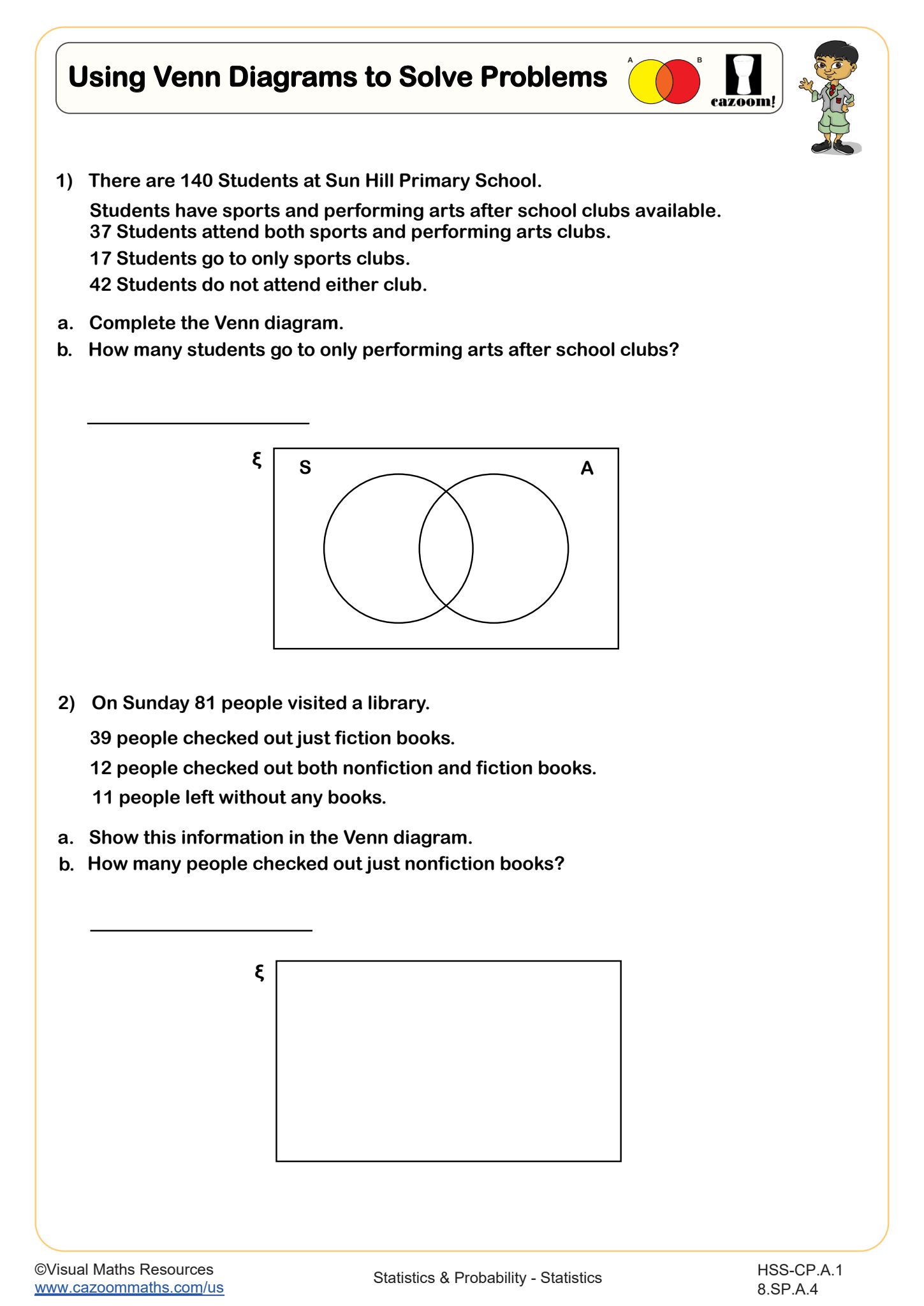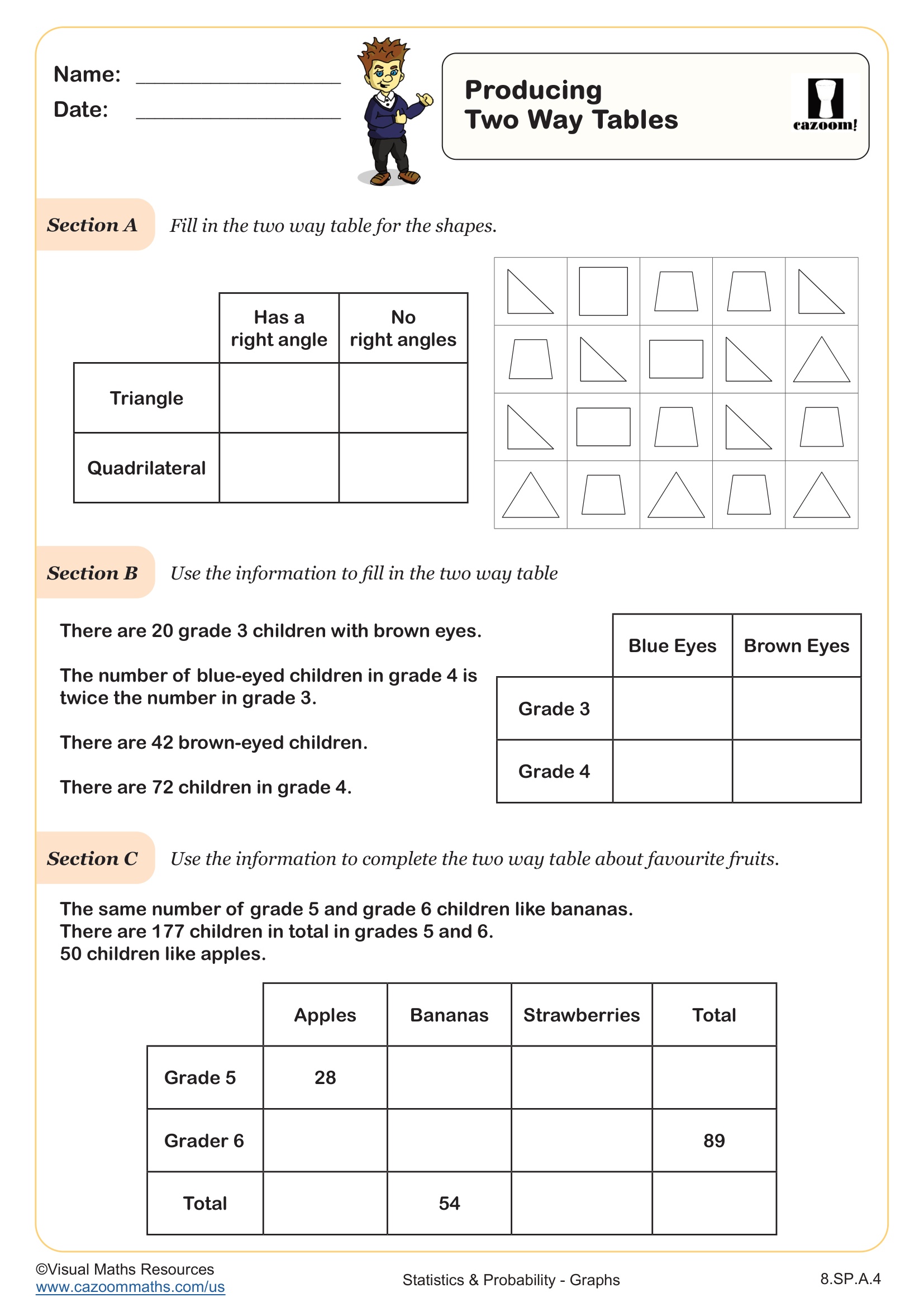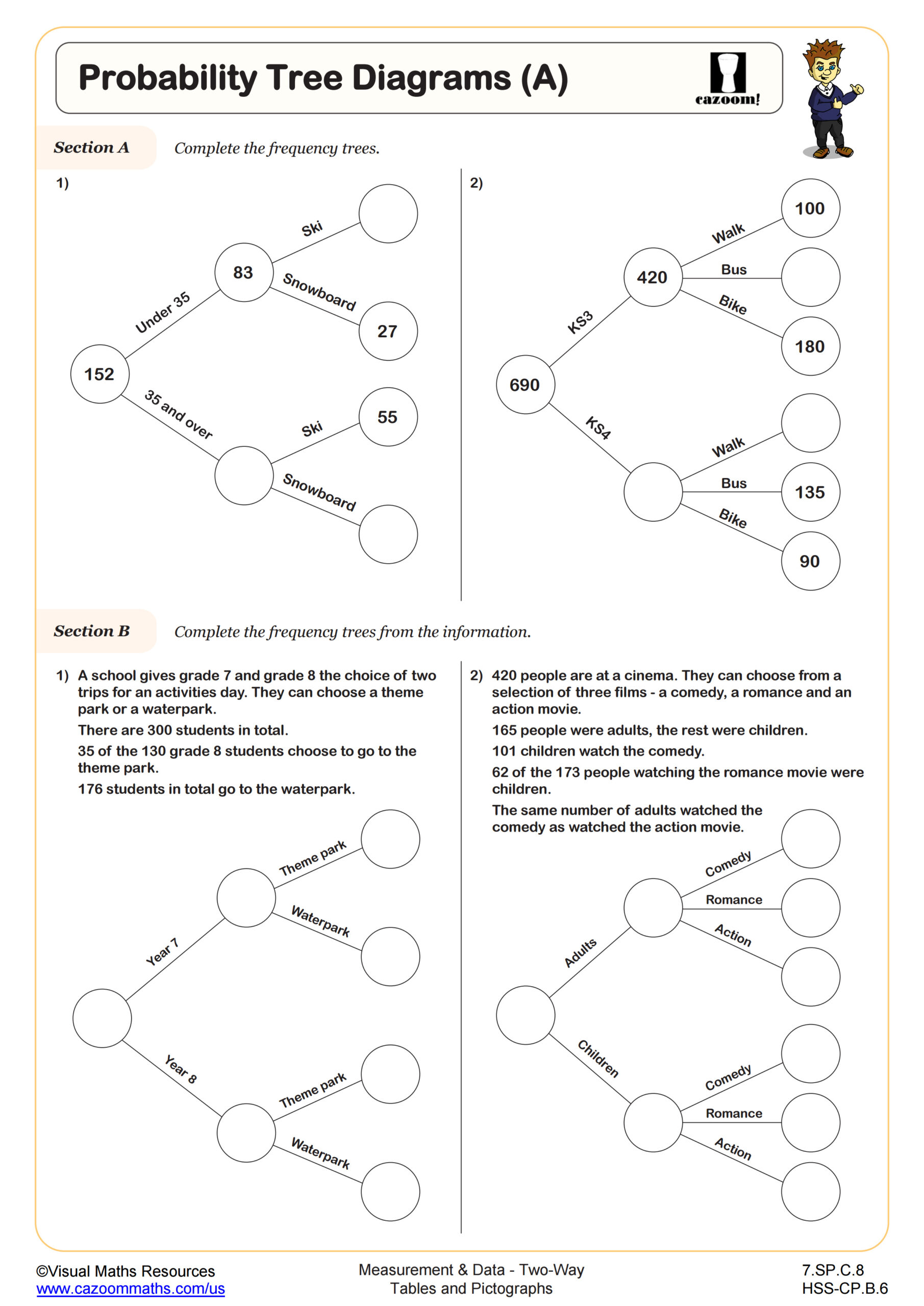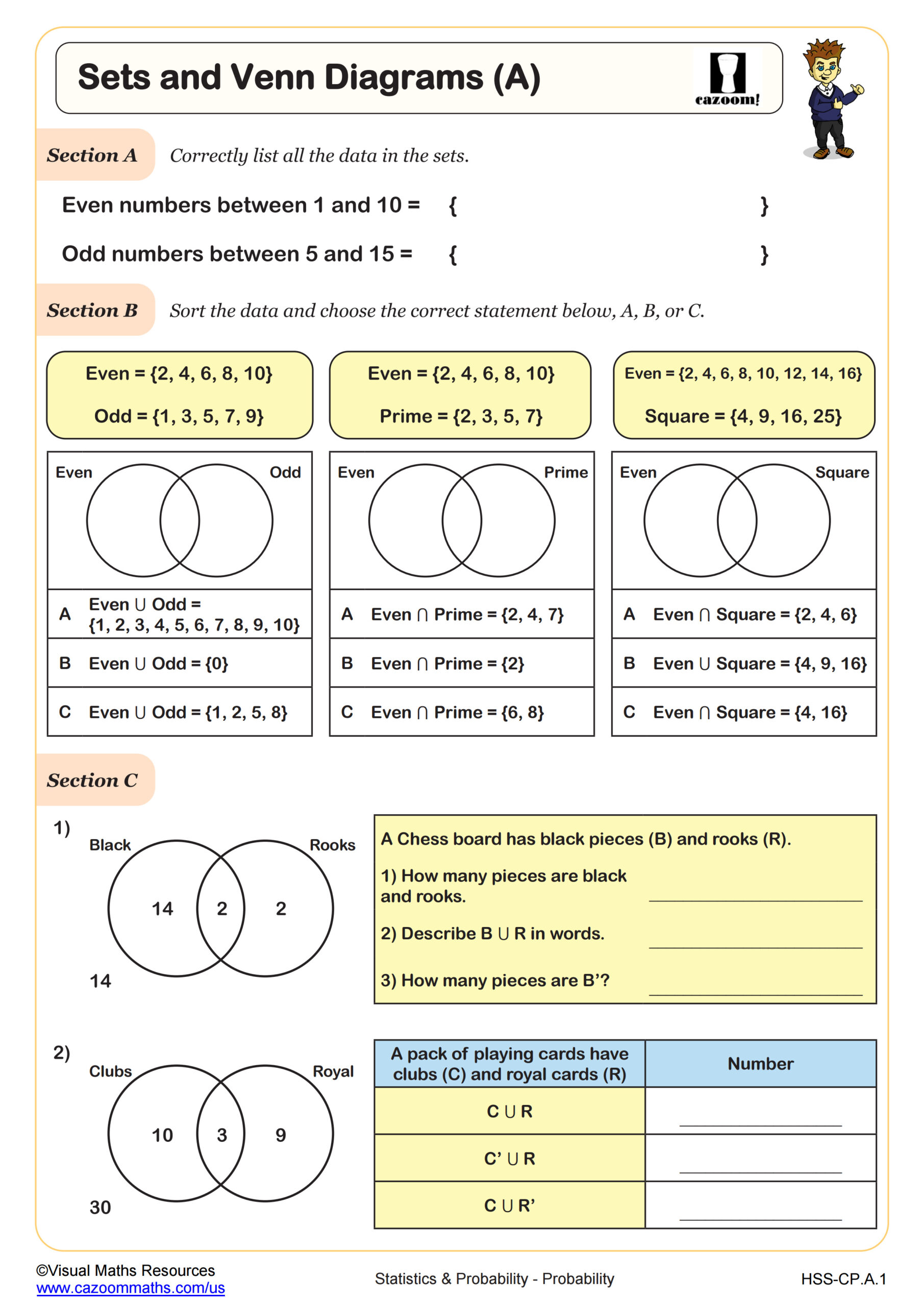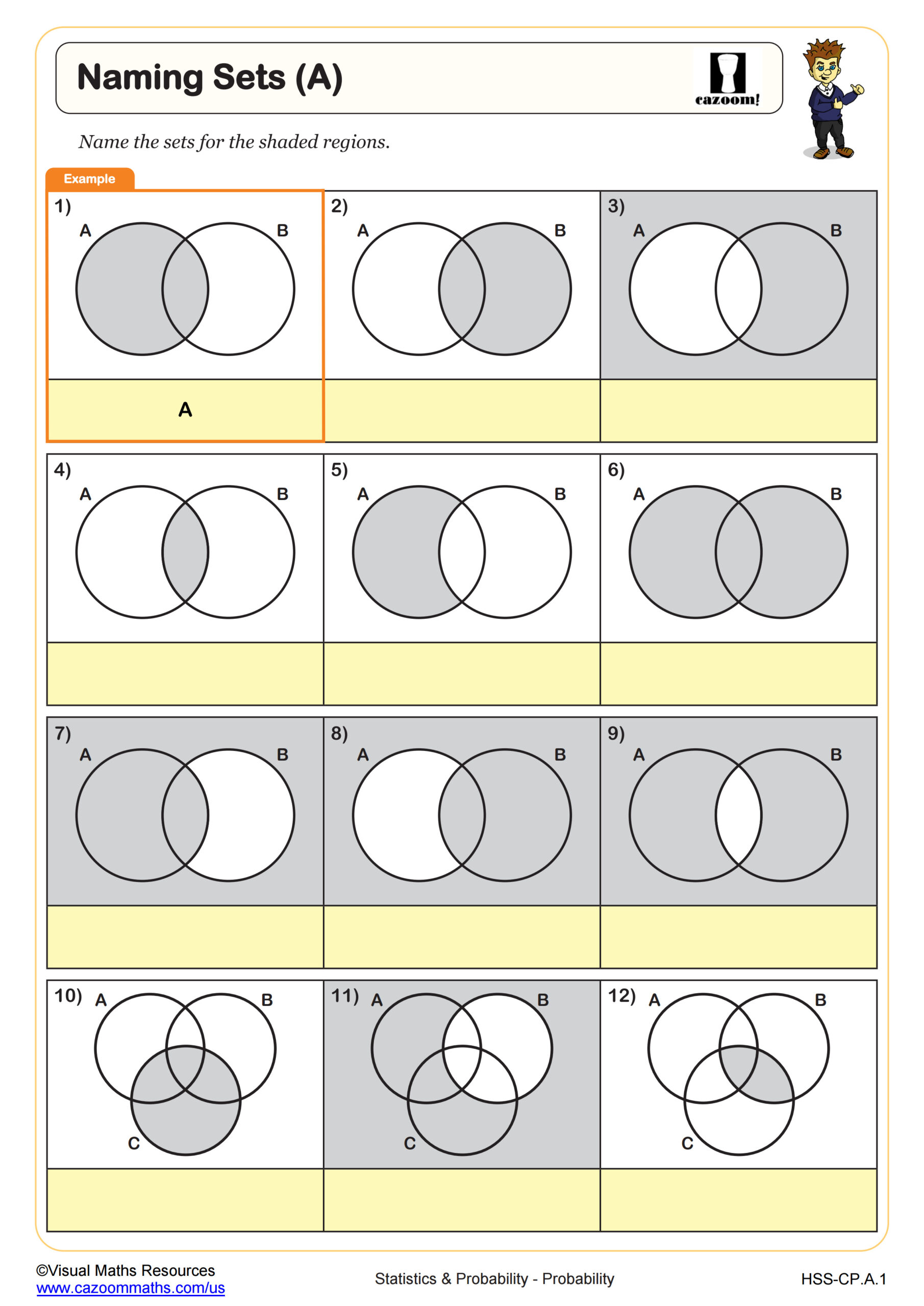Back to:
Using Venn Diagrams to Solve Problems WORKSHEET
Suitable for Grades: 8th Grade, Algebra I, IM 1
CCSS: 8.SP.A.4, HSS.CP.A.1
CCSS Description: Understand that patterns of association can also be seen in bivariate categorical data by displaying frequencies and relative frequencies in a two-way table. Construct and interpret a two-way table summarizing data on two categorical variables collected from the same subjects. Use relative frequencies calculated for rows or columns to describe possible association between the two variables. For example, collect data from students in your class on whether or not they have a curfew on school nights and whether or not they have assigned chores at home. Is there evidence that those who have a curfew also tend to have chores?
Describe events as subsets of a sample space (the set of outcomes) using characteristics (or categories) of the outcomes, or as unions, intersections, or complements of other events (“or,” “and,” “not”).
Describe events as subsets of a sample space (the set of outcomes) using characteristics (or categories) of the outcomes, or as unions, intersections, or complements of other events (“or,” “and,” “not”).
Using Venn Diagrams to Solve Problems WORKSHEET DESCRIPTION
This worksheet helps students develop their ability to analyze and interpret data in probability and statistics. It progresses from simple sorting tasks to more challenging problem-solving that requires logical thinking.
Students start by completing Venn diagrams using given numerical information. As they advance, they work with percentages and overlapping data sets. Real-world contexts, such as library book checkouts, after-school activities, and restaurant dining choices, are used throughout. More advanced questions encourage critical thinking about overlapping groups.
Ideal for both conceptual understanding and exam readiness in probability-based questions.
